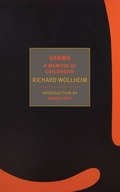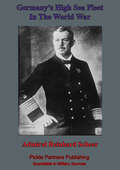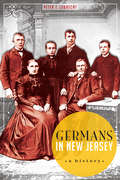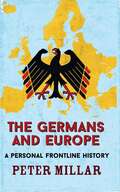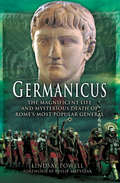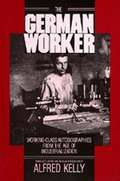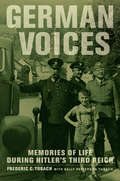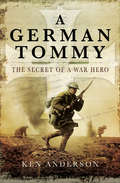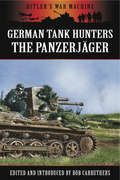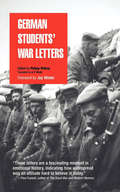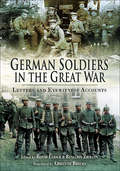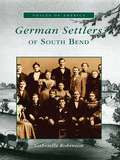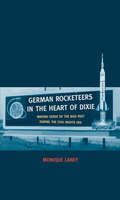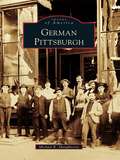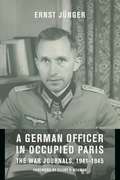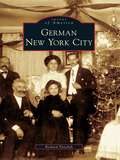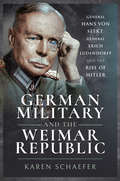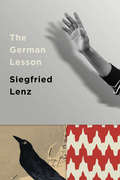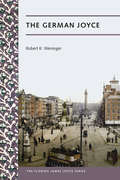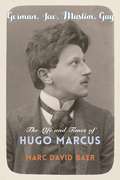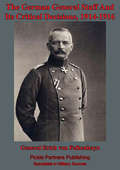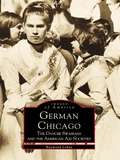- Table View
- List View
Germs: A Memoir of Childhood (G - Reference,information And Interdisciplinary Subjects Ser.)
by Richard WollheimA brilliant, meandering exploration of family and childhood memory by one of the most original British philosophers of the twentieth century.Germs is about first things, the seeds from which a life grows, as well as about the illnesses it incurs, the damage it sustains. Written at the end of the life of Richard Wollheim, a major British philosopher of the second half of the twentieth century, this memoir is not the usual story of growing up, but very much about childhood, that early world we all share in which we do not not know either the world or ourselves for sure, and in which things--houses, clothes, meals, parents, the past--loom large around us, seeming both inevitable and uncontrollable. Richard Wollheim's remarkable, moving, and entirely original book recovers this formative moment that makes us who we are before we really are who we are and that haunts us all our lives in lucid and lyrical prose.
Germany's High Sea Fleet In The World War (Barnes and Noble Digital Library)
by Anon. Admiral Reinhard ScheerIncludes 26 illustrations, battle maps and portraits of the Naval War 1914-1918Known to his own sailors as the "Man with the Iron Mask", Admiral Reinhard Scheer was a hardened dedicated sailor. It was his relentless drive that enabled him to overcome his limited social background and gain the highest rank in the Kaiserliche Marine. His memoirs are of great interest to historians of the First World War and the nascent German 'Great Power' status.Broadly divided into three sections, the first part of his memoirs concentrates on the German Fleet's activities during the first years of the war, including the bombardment of the coast of Britain, which came as such a shock to the Allies. The second, which naturally dominates his memoirs, are his great exploits at the Battle of Jutland or Skaggerak in command of the cruiser squadron which caused such damage to the British Fleet. The third and final part recounts his time as chief of staff of the German Navy, as an advocate of unrestricted Naval Warfare he recounts his lobbying of the Emperor and the methods and experiences of the U-Boats under his command.A thoroughly gripping Naval read.Author -- Admiral Reinhard Scheer (1863-1928)Translator -- Anon.Text taken, whole and complete, from the edition published in New York [etc.] Cassell and company, ltd., 1920.Original Page Count - xiv and 375 pages.
Germans in New Jersey: A History (American Heritage)
by Peter T. LubrechtGerman immigrants and their descendants are integral to New Jersey's history. When the state was young, they founded villages that are now well-established communities, such as Long Valley. Many German immigrants were lured by the freedom and opportunity in the Garden State, especially in the nineteenth century, as they escaped oppression and revolution. German heroes have played a patriotic part in the state's growth and include scholars, artists, war heroes and industrialists, such as John Roebling, the builder of the Brooklyn Bridge, and Thomas Nast, the father of the American cartoon. Despite these contributions, life in America was not always easy; they faced discrimination, especially during the world wars. But in the postwar era, refugees and German Americans alike--through their Deutsche clubs, festivals, societies and language schools--are a huge part of New Jersey's rich cultural tapestry.
The Germans and Europe: A Personal Frontline History
by Peter MillarBased on a lifetime living in and reporting on Germany and Central Europe, award-winning journalist and author Peter Millar tackles the fascinating and complex story of the people at the heart of our continent. Focussing on nine cities (only six of which are in the Germany of today) he takes us on a zigzag ride back through time via the fall of the Berlin Wall through the horrors of two world wars, the patchwork states of the Middle Ages, to the splendour of Charlemagne and the fall of Rome, with side swipes at everything on the way, from Henry VIII to the Spanish Empire. Included are mini portraits of aspects of German culture from sex and money to food and drink. Not just a book about Germany but about Europe as a whole and how we got where we are today, and where we might be tomorrow.
The Germans and Europe: A Personal Frontline History
by Peter MillarBased on a lifetime living in and reporting on Germany and Central Europe, award-winning journalist and author Peter Millar tackles the fascinating and complex story of the people at the heart of our continent. Focussing on nine cities (only six of which are in the Germany of today) he takes us on a zigzag ride back through time via the fall of the Berlin Wall through the horrors of two world wars, the patchwork states of the Middle Ages, to the splendour of Charlemagne and the fall of Rome, with side swipes at everything on the way, from Henry VIII to the Spanish Empire. Included are mini portraits of aspects of German culture from sex and money to food and drink. Not just a book about Germany but about Europe as a whole and how we got where we are today, and where we might be tomorrow.
Germanicus: The Magnificent Life and Mysterious Death of Rome's Most Popular General
by Lindsay Powell&“The story of a Roman Emperor that might have been&” (Fighting Times). Germanicus was regarded by many Romans as a hero in the mold of Alexander the Great. His untimely death, in suspicious circumstances, ended the possibility of a return to a more open republic. This, the first modern biography of Germanicus, is in parts a growing-up story, a history of war, a tale of political intrigue, and a murder mystery. In this highly readable, fast paced account, historical detective Lindsay Powell details Germanicus&’s campaigns and battles in Illyricum and Germania; tracks him on his epic tour of the Eastern Mediterranean to Armenia and down the Nile; evaluates the possible causes of his death; and reports on the cruel fate his wife, Agrippina, and their children suffered at the hands of Praetorian Guard commander, and Tiberius&’s infamous deputy, Aelius Sejanus.
The German Worker: Working-Class Autobiographies from the Age of Industrialization
by Alfred H. KellyIn the two generations before World War I, Germany emerged as Europe's foremost industrial power. The basic facts of increasing industrial output, lengthening railroad lines, urbanization, and rising exports are well known. Behind those facts, in the historical shadows, stand millions of anonymous men and women: the workers who actually put down the railroad ties, hacked out the coal, sewed the shirt collars, printed the books, or carried the bricks that made Germany a great nation. This book contains translated selections from the autobiographies of nineteen of those now-forgotten millions. The thirteen men and six women who speak from these pages afford an intimate firsthand look at how massive social and economic changes are reflected on a personal level in the everyday lives of workers.
German Voices: Memories of Life during Hitler's Third Reich
by Frederic C. Tubach Sally Patterson TubachWhat was it like to grow up German during Hitler's Third Reich? In this extraordinary book, Frederic C. Tubach returns to the country of his roots to interview average Germans who, like him, came of age between 1933 and 1945. Tubach sets their recollections and his own memories into a broad historical overview of Nazism--a regime that shaped minds through persuasion (meetings, Nazi Party rallies, the 1936 Olympics, the new mass media of radio and film) and coercion (violence and political suppression). The voices of this long-overlooked population--ordinary people who were neither victims nor perpetrators--reveal the rich complexity of their attitudes and emotions. The book also presents selections from approximately 80,000 unpublished letters (now archived in Berlin) written during the war by civilians and German soldiers. Tubach powerfully provides new insights into Germany's most tragic years, offering a nuanced response to the abiding question of how a nation made the quantum leap from anti-Semitism to systematic genocide.
A German Tommy: The Secret of a War Hero
by Ken Anderson&“How a soldier of German ancestry hid his identity to serve with the British Army . . . [Anderson] has pieced together Schwarz&’s remarkable story&” (The Daily Telegraph). It was a time of misguided loyalties. The First World War British Army, in a shameful act of patriotism, was withdrawing from the front line veterans who had a German name and posting them to a non-combatants regiment. At home, anti-German feeling was reaching fever pitch. However, one young man, the son of a German father, conspired to have the Army send him into battle. In doing so he became a hero. This is the story of the &“German Tommy,&” Walter Schwarz (alias Lieutenant Walter Lancelot Merritt, Military Cross and Bar, bearer of the king&’s pardon), told in full for the first time after years of research in Australia and Britain. It reveals why and how others helped the young man from Queensland—an Australian Army deserter—survive in an atmosphere that was poisonous at home and in battle for those of German blood who were, nevertheless, like Schwarz, loyal to king and country. Ken Anderson has gone behind the accepted facts to claim how official documents were altered and members of a secret society lied and swore false testimony to help Schwarz, acting on their oath to help a fellow member in distress. The book offers an insight into the way in which people of German origin were treated in Australia and Britain during the First World War, as well as how Freemasonry, at its peak at that time, helped men of humble backgrounds improve their status in life.
German Tank Hunters: The Panzerjäger (Hitler's War Machine)
by Bob CarruthersThis unique collection of contemporary combat accounts provides a primary source insight into the reality of anti-tank warfare on the Eastern Front. Both armoured and infantry based operations are considered.This book is part of the 'Hitler's War Machine' series, a new military history range compiled and edited by Emmy Award winning author and historian Bob Carruthers. The series draws on primary sources and contemporary documents to provide a new insight into the true nature of Hitler's Wehrmacht.The series consultant is David Mcwhinnie creator of the award winning PBS series 'Battlefield'.
German Students' War Letters
by Jay Winter Philipp Witkop A. F. WeddOriginally appearing at the same time as the pacifist novel All Quiet on the Western Front, this powerful collection provides a glimpse into the hearts and minds of an enemy that had been thoroughly demonized by the Allied press. Composed by German students who had left their university studies in order to participate in World War I, these letters reveal the struggles and hardships that all soldiers face.The stark brutality and surrealism of war are revealed as young men from Germany describe their bitter combat and occasional camaraderie with soldiers from many nations, including France, Great Britain, and Russia. Like its companion volume, War Letters of Fallen Englishmen, these letters were carefully selected for their depth of perception, the intensity of their descriptions, and their messages to future generations. "Should these letters help towards the establishment of justice and better understanding between nations," the editor reflects in his introduction, "their deaths will not have been in vain." This edition contains a new foreword by the distinguished World War I historian Jay Winter.
German Soldiers in the Great War: Letters and Eyewitness Accounts
by Jay Winter Benjamin Ziemann Bernd UlrichThe first English translation of writings that capture the lives and thoughts of German soldiers fighting in the trenches and on the battlefields of WWI. German Soldiers in the Great War is a vivid selection of firsthand accounts and other wartime documents that shed new light on the experiences of German frontline soldiers during the First World War. It reveals in authentic detail the perceptions and emotions of ordinary soldiers that have been covered up by the smokescreen of official military propaganda about “heroism” and “patriotic sacrifice.” In this essential collection of wartime correspondence, editors Benjamin Ziemann and Bernd Ulrich have gathered more than two hundred mostly archival documents, including letters, military dispatches and orders, extracts from diaries, newspaper articles and booklets, medical reports and photographs. This fascinating primary source material provides the first comprehensive insight into the German frontline experiences of the Great War, available in English for the first time in a translation by Christine Brocks.
German Settlers of South Bend
by Gabrielle RobinsonThe story of the first German immigrants to northern Indiana is the story of the beginnings of South Bend. The predominant immigrant group from the 1840s to the 1870s, the Germans helped build South Bend from an isolated trading post into a thriving industrial city. They also played a key role in transforming the surrounding wilderness into rich and fertile farmland.Using first-hand personal accounts and public documents, German Settlers of South Bend illustrates the lives of these pioneer immigrants and their growing city. The material has been collected from a large number of sources on both sides of the Atlantic, including more than 200 German letters from the 1840s to the 1870s that provide glimpses into the day-to-day lives of these early settlers and their families back in Germany. Descendants of immigrants from all over the United States and Germany have come forward with genealogies, stories, and pictures, providing a far-reaching portrait of the times.
German Rocketeers in the Heart of Dixie
by Dr Monique LaneyThis thought-provoking study by historian Monique Laney focuses on the U. S. government-assisted integration of German rocket specialists and their families into a small southern community soon after World War II. In 1950, Wernher von Braun and his team of rocket experts relocated to Huntsville, Alabama, a town that would celebrate the team, despite their essential role in the recent Nazi war effort, for their contributions to the U. S. Army missile program and later to NASA's space program. Based on oral histories, provided by members of the African American and Jewish communities, and by the rocketeers' families, co-workers, friends, and neighbors, Laney's book demonstrates how the histories of German Nazism and Jim Crow in the American South intertwine in narratives about the past. This is a critical reassessment of a singular time that links the Cold War, the Space Race, and the Civil Rights era while addressing important issues of transnational science and technology, and asking Americans to consider their country's own history of racism when reflecting on the Nazi past.
German Pittsburgh (Images of America)
by Michael R. ShaughnessyGerman Pittsburgh explores the multifaceted cultural history of German-speaking immigrants and residents in the Greater Pittsburgh area. Today over one quarter of the city's residents claim German heritage, the largest ethnic group in the region. German-speaking Pittsburghers include names like H. J. Heinz, Honus Wagner, and the Kaufmanns, and they produced beloved Pittsburgh beers such as Iron City and Penn Pilsner. It might be surprising to know that German was an official language of the city at one time, and a daily German newspaper was printed from the mid-1800s up through World War II. Today remnants of the German-speaking community can be found on the North Side, the South Side, Troy Hill, and Mount Oliver, to name a few. German Pittsburgh provides an overview of the contributions that this diverse ethnic community has made and is making today in the city.
A German Officer in Occupied Paris: The War Journals, 1941-1945 (European Perspectives: A Series in Social Thought and Cultural Criticism)
by Ernst JüngerErnst Jünger was one of twentieth-century Germany’s most important—and most controversial—writers. Decorated for bravery in World War I and the author of the acclaimed western front memoir Storm of Steel, he frankly depicted war’s horrors even as he extolled its glories. As a Wehrmacht captain during World War II, Jünger faithfully kept a journal in occupied Paris and continued to write on the eastern front and in Germany until its defeat—writings that are of major historical and literary significance.Jünger’s Paris journals document his Francophile excitement, romantic affairs, and fascination with botany and entomology, alongside mystical and religious ruminations and trenchant observations on the occupation and the politics of collaboration. While working as a mail censor, he led the privileged life of an officer, encountering artists such as Céline, Cocteau, Braque, and Picasso. His notes from the Caucasus depict the chaos after Stalingrad and atrocities on the eastern front. Upon returning to Paris, Jünger observed the French resistance and was close to the German military conspirators who plotted to assassinate Hitler in 1944. After fleeing France, he reunited with his family as Germany’s capitulation approached. Both participant and commentator, close to the horrors of history but often distancing himself from them, Jünger turned his life and experiences into a work of art. These wartime journals appear here in English for the first time, giving fresh insights into the quandaries of the twentieth century from the keen pen of a paradoxical observer.
German New York City (Images of America)
by Richard PanchykGerman New York City celebrates the rich cultural heritage of the hundreds of thousands of German immigrants who left the poverty and turmoil of 19th- and 20th-century Europe for the promise of a better life in the bustling American metropolis. German immigration to New York peaked during the 1850s and again during the 1880s, and by the end of the 19th century New York had the third-largest German-born population of any city worldwide. German immigrants established their new community in a downtown Manhattan neighborhood that became known as Kleindeutschland or Little Germany. During the late 19th and early 20th centuries, much of the German population moved north to the Upper East Side's Yorkville and subsequently spread out to the other boroughs of the city.
German Military and the Weimar Republic: General Hans Von Seekt, General Erich Ludendorff And The Rise Of Hitler
by Karen SchaeferThis military biography examines the man who sought to rebuild the Germany Army after WWI—and the rival who stoked the rise of Nazism.After Germany’s devastating defeat in the First World War, General Hans von Seekt became Chief of the Army Command at the Reichewehr Ministry of the Weimar Republic. His job was to rebuild the shattered German army and repair the nation’s standing on the world stage. The punitive terms of the post-war settlement made these ambitious goals nearly impossible, but the most significant challenges von Seekt faced came from within Germany.Von Seekt aimed to build a modern and efficient military with a main strategy of peaceful defense purposes. This original and far-sighted policy was opposed by his rival, General Erich Ludendorff, who led a nationalistic movement seeking revenge for Germany’s defeat. Ludendorff proposed to rebuild the once-mighty German imperial army as a major international force. The failure of von Seekt's experiment was tragically mirrored by the fall of the Weimar Republic, and the rise of rise of Hitler and Nazi Germany.
The German Lesson
by Siegfried Lenz“The German Lesson marks a double triumph––a book of rare depth and brilliance, to begin with, presented in an English version that succeeds against improbable odds in conveying the full power of the original.” —Ernst Pawel, New York Times Book Review Siggi Jepsen, incarcerated as a juvenile delinquent, is one day assigned to write a routine German lesson on the "The Joys of Duty." Overfamiliar with these “joys,” Siggi sets down his life since 1943, a decade earlier, when as a boy he watched his father, constable of the northernmost police station in Germany, doggedly carry out orders from Berlin to stop a well-known Expressionist, their neighbor, from painting and to seize all his “degenerate" work. Soon Siggi is stealing the paintings to keep them safe from his father. Against the great brooding northern landscape. Siggi recounts the clash of father and son, of duty and personal loyalty, in wartime Germany. “I was trying to find out,” Lenz says, "where the joys of duty could lead a people"
The German Joyce (Florida James Joyce)
by Robert K. Weninger"The first comprehensive account of the enormous impact of Joyce on German modernist and postmodern writers. An indispensable book on Joyce's 'German' face."—Gerald Gillespie, Stanford University In August 1919, a production of James Joyce's Exiles was mounted at the Munich Schauspielhaus and quickly fell due to harsh criticism. The reception marked the beginning of a dynamic association between Joyce, German-language writers, and literary critics. It is this relationship that Robert Weninger analyzes in The German Joyce. Opening a new dimension of Joycean scholarship, this book provides the premier study of Joyce's impact on German-language literature and literary criticism in the twentieth century. The opening section follows Joyce's linear intrusion from the 1910s to the 1990s by focusing on such prime moments as the first German translation of Ulysses, Joyce's influence on the Marxist Expressionism debate, and the Nazi blacklisting of Joyce's work. Utilizing this historical reception as a narrative backdrop, Weninger then presents Joyce's horizontal diffusion into German culture. Weninger succeeds in illustrating both German readers' great attraction to Joyce's work as well as Joyce's affinity with some of the great German masters, including Goethe and Rilke. He argues that just as Shakespeare was a model of linguistic exuberance for Germans in the eighteenth century, Joyce became the epitome of poetic inspiration in the twentieth. This volume, through Weninger's critiques and repositions, simultaneously revisits the fraught relationship between influence and intertextuality in literary studies and reassesses their value as tools for contemporary comparative criticism today. Robert K. Weninger, emeritus professor of German and comparative literature at King’s College London, is author or editor of over ten books, including Arno Schmidts Joyce-Rezeption 1957-1970: Ein Beitrag zur Poetik Arno Schmidts, and is a past editor of the Journal of Comparative Critical Studies.
German, Jew, Muslim, Gay: The Life and Times of Hugo Marcus (Religion, Culture, and Public Life)
by Marc David BaerHugo Marcus (1880–1966) was a man of many names and many identities. Born a German Jew, he converted to Islam and took the name Hamid, becoming one of the most prominent Muslims in Germany prior to World War II. He was renamed Israel by the Nazis and sent to the Sachsenhausen concentration camp before escaping to Switzerland. He was a gay man who never called himself gay but fought for homosexual rights and wrote queer fiction under the pen name Hans Alienus during his decades of exile.In German, Jew, Muslim, Gay, Marc David Baer uses Marcus’s life and work to shed new light on a striking range of subjects, including German Jewish history and anti-Semitism, Islam in Europe, Muslim-Jewish relations, and the history of the gay rights struggle. Baer explores how Marcus created a unique synthesis of German, gay, and Muslim identity that positioned Johann Wolfgang von Goethe as an intellectual and spiritual model. Marcus’s life offers a new perspective on sexuality and on competing conceptions of gay identity in the multilayered world of interwar and postwar Europe. His unconventional story reveals new aspects of the interconnected histories of Jewish and Muslim individuals and communities, including Muslim responses to Nazism and Muslim experiences of the Holocaust. An intellectual biography of an exceptional yet little-known figure, German, Jew, Muslim, Gay illuminates the complexities of twentieth-century Europe’s religious, sexual, and cultural politics.
German Intellectuals and the Challenge of Democratic Renewal
by Sean A. FornerThis book examines how democracy was rethought in Germany in the wake of National Socialism, the Second World War and the Holocaust. Focusing on a diverse network of public intellectuals in the immediate post-war occupation years, Sean A. Forner traces their attempts to reckon with the experience of Nazism and scour Germany's ambivalent political and cultural traditions for materials with which to build a better future. In doing so, he reveals, they formulated an internally variegated but distinctly participatory vision of democratic renewal - a paradoxical counter-elitism of intellectual elites. Although their projects ran aground on internal tensions and on the Cold War, their commitments fuelled critique and dissent in East and West during the 1950s and thereafter. The book uncovers a conception of political participation that went beyond the limited possibilities of the Cold War era and which would influence the political struggles of later decades in both post-war Germanys.
The German General Staff And Its Decisions, 1914-1916
by General Erich von Falkenhayn Anon AnonHaving had a long and distinguished military career, in 1914 General Erich von Falkenhayn assumed the post as chief of the German General Staff in the middle of the First World War. The German position was at a crisis point, the initial plan to win the war by a wide out-flanking movement through Belgium had been foiled; a new plan would have to decided on. In the West, increasing numbers of British troops poured to the Front; in the East, the ambitious team of generals Hindenburg and Ludendorff pushed for reinforcements to finally beat the Russians. Falkenhayn decided that significant efforts must be made in the Western theatre and came up with a brutal plan to decide the war: he conceived the idea of besieging the historic French city of Verdun in early 1916, of "bleeding it white", as he phrased it. He planned to draw the bulk of the French army into the Verdun salient, thus effectively tying up the French army, and then to methodically destroy them with concentrated artillery fire. The plan failed only by valiant sacrifices and fighting by the French and pressure applied by their allies in other sectors, not least the British effort during the battle of the Somme. Falkenhayn was thereafter removed from his supreme post and would fight on other front in charge of smaller forces.His memoirs of the period of his command are illuminating and give an insight of what was going on "on the other side of the hill" during the First World War.Author -- General von Falkenhayn, Erich, 1861-1922.Translator -- AnonText taken, whole and complete, from the edition published in London, Hutchinson 1919. Original Page Count - 299 pages.
German Chicago: The Danube Swabians and the American Aid Societies
by Raymond LohneIn German Chicago: The Danube Swabians and the American Aid Societies, historian Raymond Lohne presents the Germans who came to be called the Donauschwaben and their American counterparts. This amazing photographic collection of over 200 historic images has been gathered through the efforts of the author and survivors of the Expulsion, as well as numerous German-American societies and individuals throughout the nation.

